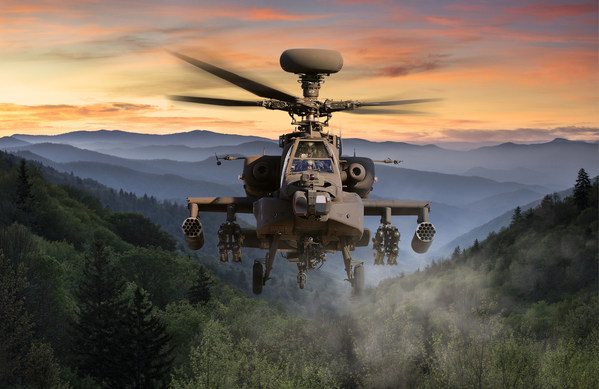Lockheed Martin's Modernized Turret Adds Performance, Operational Capabilities to the AH-64E Apache Helicopter

Lockheed Martin Modernized Turret Apache
The new design increases turret reliability by 40 percent and drastically improves aircraft availability through a variety of flight line maintenance enhancements.
WASHINGTON, Oct. 15, 2019 /PRNewswire/ -- The U.S. Army recently awarded Lockheed Martin (NYSE: LMT) a $40.6 million contract to produce Modernized Turrets (M-TUR) for the AH-64E Apache helicopter, an upgrade to the Modernized Target Acquisition Designation Sight and Pilot Night Vision Sensor (M-TADS/PNVS) system with enhanced operational and performance capabilities.
"Our primary objective with the Modernized Turret is to improve system performance, increase reliability, and reduce required maintenance and support costs," said Tom Eldredge, director of Apache Fire Control programs at Lockheed Martin Missiles and Fire Control. "The M-TUR demonstrates our commitment to delivering advanced, affordable capabilities and innovative solutions to our nation's warfighters, enabling increased readiness, reliability and survivability in battle."
In addition to performance improvements that provide greater rates and acceleration of sensors in azimuth and elevation, M-TUR's new modular design improves turret reliability by 40 percent and reduces operation and support costs with a dramatic decrease in time required to conduct flight line maintenance. The design also allows for subassembly replacement on the flight line and includes higher reliability components that will improve aircraft availability.
M-TADS/PNVS provides Apache helicopter pilots with long-range, precision engagement and pilotage capabilities for mission success and flight safety during day and night, and in adverse weather conditions.
Lockheed Martin has delivered more than 1,400 M-TADS/PNVS systems and spares to the U.S. Army and 16 international customers in 15 nations over the last 14 years. For additional information, visit our website: www.lockheedmartin.com/mturret.

Lockheed Martin Modernized Turret Apache
The new design increases turret reliability by 40 percent and drastically improves aircraft availability through a variety of flight line maintenance enhancements.
WASHINGTON, Oct. 15, 2019 /PRNewswire/ -- The U.S. Army recently awarded Lockheed Martin (NYSE: LMT) a $40.6 million contract to produce Modernized Turrets (M-TUR) for the AH-64E Apache helicopter, an upgrade to the Modernized Target Acquisition Designation Sight and Pilot Night Vision Sensor (M-TADS/PNVS) system with enhanced operational and performance capabilities.
"Our primary objective with the Modernized Turret is to improve system performance, increase reliability, and reduce required maintenance and support costs," said Tom Eldredge, director of Apache Fire Control programs at Lockheed Martin Missiles and Fire Control. "The M-TUR demonstrates our commitment to delivering advanced, affordable capabilities and innovative solutions to our nation's warfighters, enabling increased readiness, reliability and survivability in battle."
In addition to performance improvements that provide greater rates and acceleration of sensors in azimuth and elevation, M-TUR's new modular design improves turret reliability by 40 percent and reduces operation and support costs with a dramatic decrease in time required to conduct flight line maintenance. The design also allows for subassembly replacement on the flight line and includes higher reliability components that will improve aircraft availability.
M-TADS/PNVS provides Apache helicopter pilots with long-range, precision engagement and pilotage capabilities for mission success and flight safety during day and night, and in adverse weather conditions.
Lockheed Martin has delivered more than 1,400 M-TADS/PNVS systems and spares to the U.S. Army and 16 international customers in 15 nations over the last 14 years. For additional information, visit our website: www.lockheedmartin.com/mturret.
